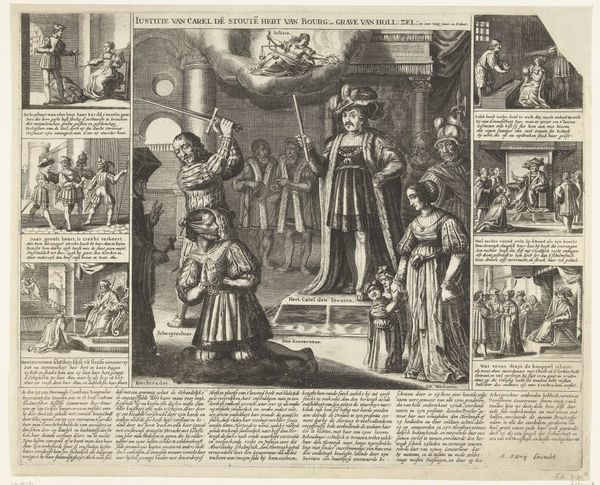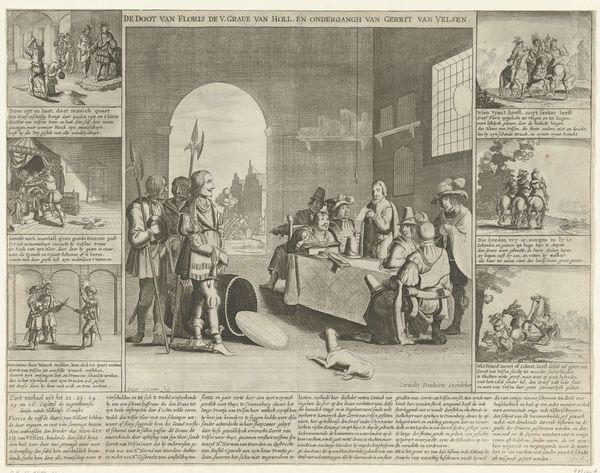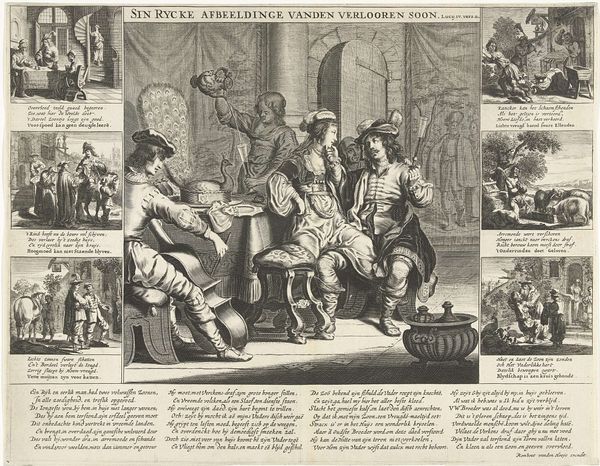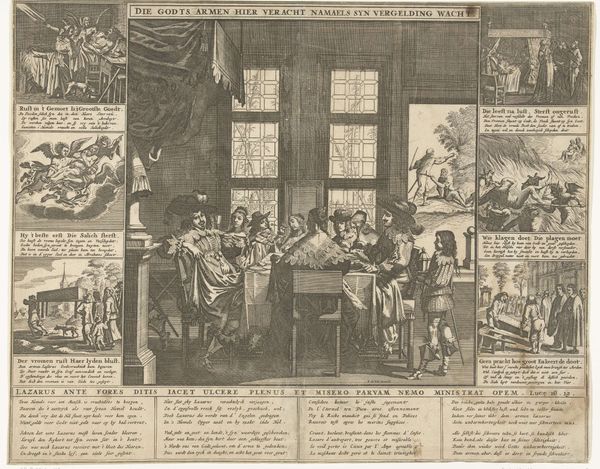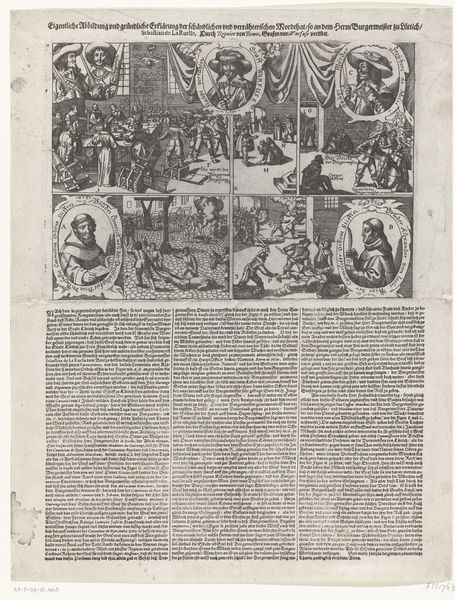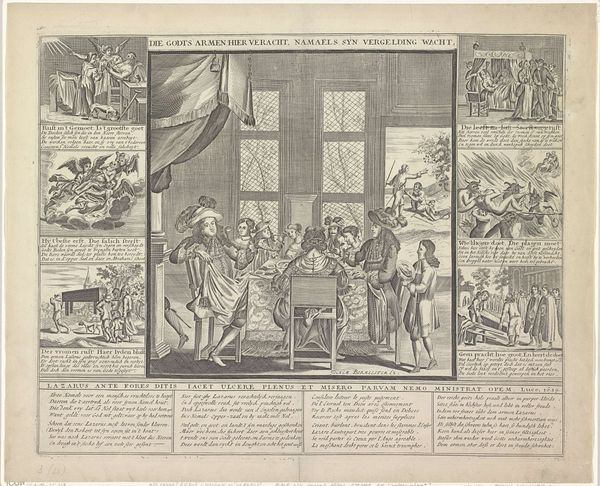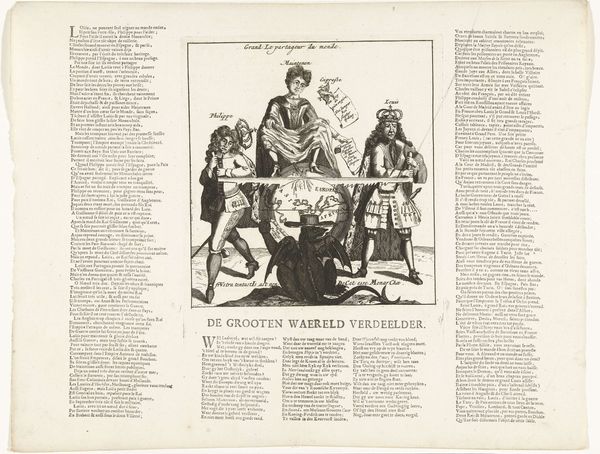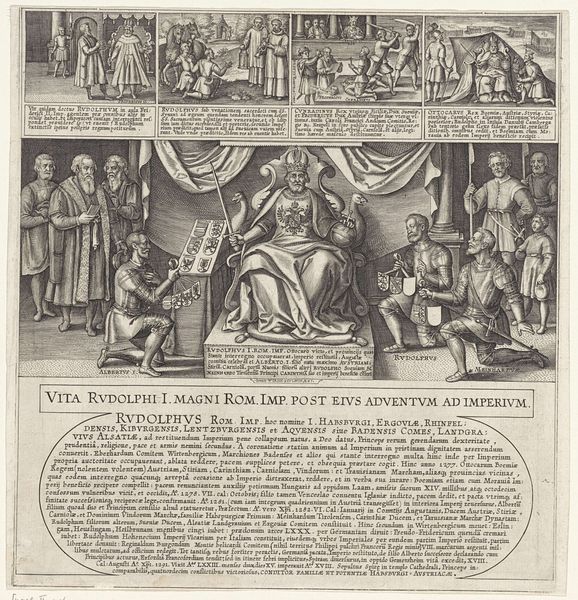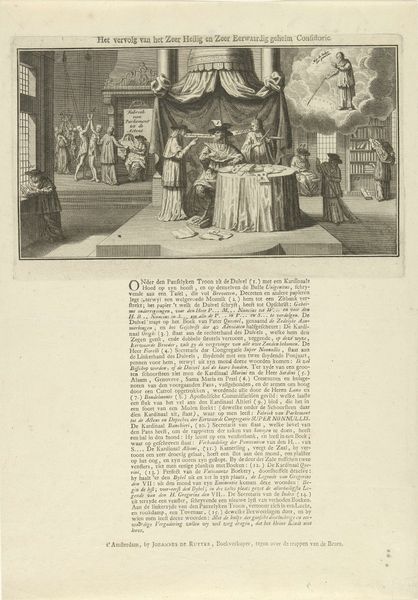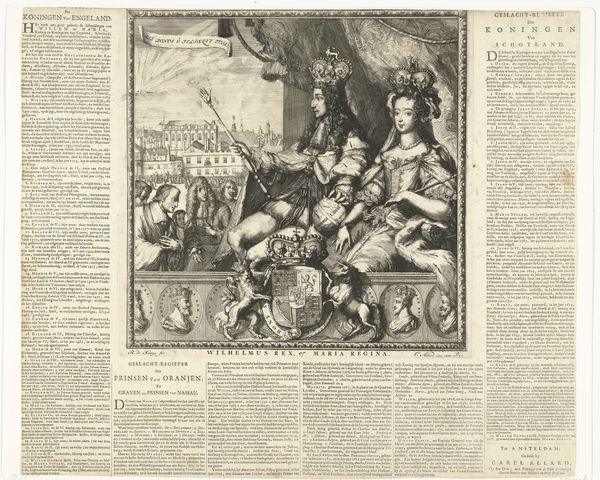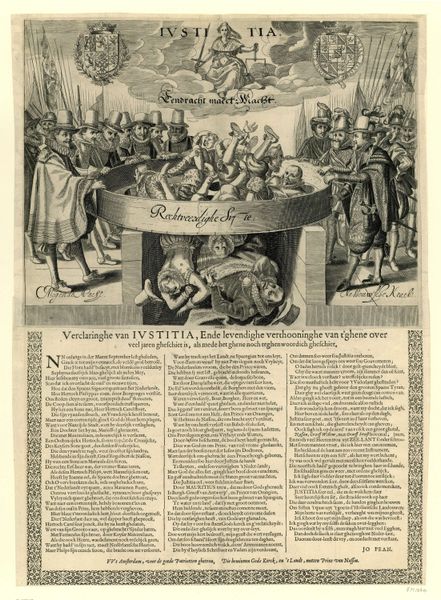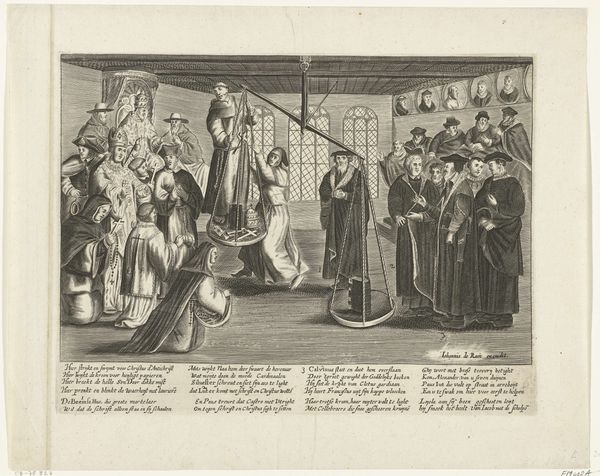
print, engraving
#
narrative-art
#
baroque
#
dutch-golden-age
# print
#
history-painting
#
engraving
Dimensions: height 428 mm, width 507 mm
Copyright: Rijks Museum: Open Domain
Curator: This detailed engraving, "Rechtspraak van graaf Willem III," dating from 1610-1678, is attributed to Salomon Savery and held in the Rijksmuseum collection. It depicts the judicial practices associated with Count William III. Editor: It's stark. The black and white, combined with that precise line work, really amplifies the harshness of justice being served. There's a rigidity in the composition; everything is so meticulously rendered. Curator: As an engraving, the image is fundamentally reproducible and functions within a market system of prints that circulated images of power and governance. We can also see that Savery’s work depended on collaboration within workshops, dividing labor and utilizing specialized skills. Editor: The overall visual impact definitely evokes an earlier time. It's a scene crowded with figures enacting judgment. Is that William III himself lying in state at the center of the image? What are those smaller panels showing along the perimeter? Curator: Yes, the central scene depicts justice dispensed at the count's deathbed, while the surrounding vignettes showcase different historical examples of legal cases under William's rule. Each scenario likely holds a moral lesson related to good governance. Editor: It's like a medieval tapestry compressed into a single frame, weaving together narrative threads across time. The inclusion of these scenes speaks to the visual language understood by people of that era, where symbolic meaning permeated every object. Is it fair, do you think, to suppose it functions like propaganda? Curator: I believe we need to view it as visual commentary, operating through its dissemination and within the wider societal norms of 17th-century Dutch culture. As prints circulated widely, we can understand this to have impacted and even constituted ‘public opinion’ in the period. Editor: Reflecting on this work, I'm struck by how art can simultaneously reflect specific legal history, whilst functioning more widely within the domain of politics and memory-making. Curator: Absolutely, and thinking of materials and modes of production really expands our analysis beyond traditional interpretations.
Comments
No comments
Be the first to comment and join the conversation on the ultimate creative platform.
